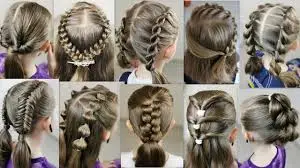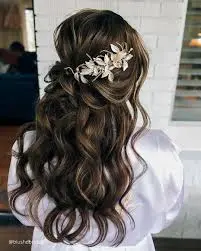Hairstyles play a significant role in personal expression. They can reflect personality, mood, and even social status. Over the years, hairstyles have evolved dramatically. Trends shift with seasons, cultures, and individual preferences. This guide will explore the rich history of hairstyles, various types, and current trends.
History of Hairstyles
Key Historical Hairstyles Through the Ages
Hairstyle has been a part of human culture for centuries. Ancient Egyptians wore elaborate wigs adorned with gold. In the Middle Ages, long hair symbolized nobility. During the Renaissance, intricate styles became popular among the elite. Each era has left its mark on hairstyle trends.
Cultural Significance of Various Hairstyles Globally
Different cultures have unique hairstyles that hold deep meanings. In Africa, cornrows and braids signify heritage and community. In Japan, traditional styles like the “wareshinobu” reflect cultural identity. Understanding these styles enriches our appreciation for global diversity.
Types of Hairstyles

A. Long Hairstyles
Long hairstyles offer versatility. Popular styles include braids, waves, and straight locks. Each style can be adapted for various occasions.
Maintenance Tips and Products
To maintain long hair, use quality shampoos and conditioners. Regular trims prevent split ends. Deep conditioning treatments keep hair healthy and shiny.
B. Medium Hairstyles
Medium hairstyles, such as bobs and lobs, are trending now. They suit various face shapes and hair types.
Styling Techniques
Styling medium hair can be easy. Use a round brush while drying for volume. Curling wands create beautiful waves.
C. Short Hairstyles
Short hairstyles are bold and stylish. Iconic cuts include the pixie and buzz cut.
See also: exploring-the-rich-heritage-of-traditional-uruguayan-clothing/
Face Shape Compatibility
Choosing a short style depends on face shape. A pixie cut suits oval faces, while a bob flatters round faces.
D. Updos and Formal Styles
Updos are perfect for formal events. Classic styles include chignons and French twists.
Step-by-Step Tutorials for Popular Updos
- Chignon: Gather hair into a low ponytail. Twist and wrap around the base. Secure with pins.
- French Twist: Gather hair to one side. Twist and pin in place. Adjust for a polished look.
Seasonal Hairstyle Trends

A. Spring/Summer Trends
Spring and summer bring light, airy styles. Bright colors and beachy waves are popular.
B. Fall/Winter Trends
Fall and winter trends feature rich colors. Cozy styles like layered cuts and warm tones are in demand.
Hairstyle Inspiration by Celebrity
Celebrities often set hairstyle trends. Stars like Jennifer Aniston and Zendaya inspire millions. Their iconic looks influence fans worldwide.
Analysis of Their Influence on Current Trends
Social media amplifies celebrity influence. Hairstylists share celebrity-inspired looks, making them accessible. Fans recreate these styles, keeping trends alive.
DIY Hairstyling Tips
A. Tools and Products Needed
Essential tools for home styling include:
- Hairdryer
- Curling iron
- Straightener
- Brushes and combs
B. Step-by-Step Guides for Popular DIY Styles
- Beach Waves: Use a curling iron to create loose curls. Run fingers through hair for a tousled look.
- Sleek Straight Hair: Apply heat protectant. Use a straightener for a polished finish.
C. Common Mistakes and How to Avoid Them
Avoid using too much heat. It can damage hair. Always use heat protectant before styling.
Hair Care Essentials
A. Daily Care habits for Different Hair Types
Different hair types need specific care. Curly hair benefits from moisturizing products. Straight hair requires light formulas to avoid greasiness.
B. Recommended Products for Healthy Hair
Invest in quality shampoos and conditioners. Look for sulfate-free options. Hair oils can provide extra nourishment.
C. Importance of Regular Trims and Treatments
Regular trims keep hair healthy. Deep conditioning treatments enhance shine and strength.
Hairstyle Trends Around the World
A. Overview of Global Hairstyle Trends
Hairstyles vary globally. In Brazil, vibrant colors are popular. In India, traditional braids are common.
B. Cultural Significance of Specific Styles in Various Regions
Each hairstyle tells a story. Understanding these styles fosters cultural appreciation. It highlights the beauty of diversity.
FAQs
Q: How do I choose the right hairstyle?
A: Consider your face shape and hair type.
Q: What products should I use for curly hair?
A: Use moisturizing shampoos and curl creams.
Q: How often should I wash my hair?
A: It depends on hair type. Oily hair may need daily washing, while dry hair can go longer.
Conclusion
Hairstyles are more than just fashion. They are a form of self-expression. As trends evolve, there is always something new to explore. Embrace your unique style and enjoy the journey of hairstyling. Whether you prefer long, medium, or short hair, the possibilities are endless.

